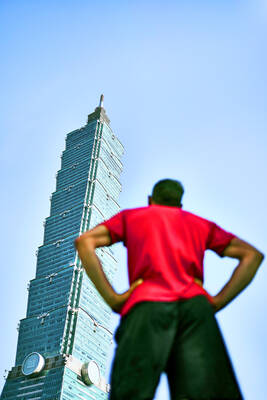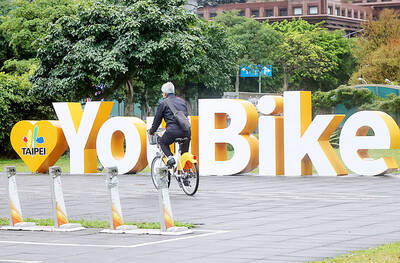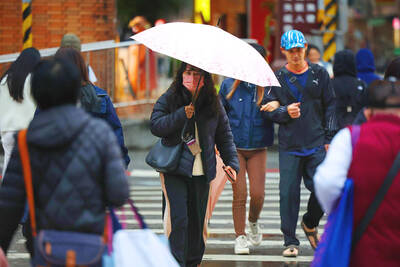Less than four months after the 228 Incident, the Chinese Nationalist Party (KMT) obtained its first group of 85 properties “transferred and appropriated” from the Japanese, the Cabinet’s Ill-gotten Party Assets Settlement Committee said on Sunday.
Taiwan was under Japanese rule from 1895 to 1945. The KMT government took over Taiwan after Japan lost World War II.
An investigation by the committee showed that in late April 1947, the Taiwan Provincial Administrative Executive Office, at the urging of the KMT’s central committee, sent the Executive Yuan in Nanjing and KMT director-general Chiang Kai-shek (蔣介石) a list of estimated prices at which the Executive Committee of the KMT Taiwan Province Chapter might obtain property held by the Japanese.
In June 1947, the Executive Yuan approved the request by the KMT Taiwan Province Chapter and instructed the Taiwan Provincial Administrative Executive Office to approve the chapter’s appropriation of 85 Japanese-owned buildings, the investigation showed.
One of the first 85 properties “transferred and appropriated” to the KMT, the Police Guest House (警察會館) — a Japanese colonial-era, three-story building in Taipei’s Akashicho — should have become a state asset after World War II, but it was taken over by the KMT’s Taiwan provincial chapter and turned into a party asset, an anonymous committee member said.
After the Taiwan provincial chapter moved to Taichung in 1957 and took the Taichung Public Hall (台中公會堂) as its office, the Police Guest House on Taipei’s Nanyang Street (南陽街) was transferred to the KMT’s Taipei chapter, the investigation showed.
The building was later sold by the KMT, turning a state property valued at NT$60 million (US$1.91 million at the current exchange rate) into private property, the committee member said.
The Japanese colonial-era Yorozuya Roykan (萬屋旅館) in Taipei’s Omotecho also became a KMT asset after World War II, the committee member said.
Also one of the first Japanese properties to be appropriated, the building was used to house KMT staff by the Taiwan provincial chapter, as well as for the Taiwan Daily (台灣日報), the committee member said, adding that the property had an estimated value of NT$8 million in the 1950s.
In Taipei’s Kyomachi, a Western-style building was used by the KMT as a “culture service club,” and in Taipei’s Hokumoncho, the Umeyashiki (梅屋敷) Japanese hotel and restaurant was used by the KMT for decades as the Dr Sun Yat-sen Memorial House (國父史蹟紀念館) before being sold to the Taipei City Government for NT$600 million, the committee member said.
The first list of properties “transferred and appropriated” by the KMT also includes prime real estate in Taipei owned by Japanese, the committee member said.
“Without spending a penny, the KMT turned state property into party property,” the committee member said, adding that the KMT still refuses to pay the NT$850 million sought by the committee.

US climber Alex Honnold is to attempt to scale Taipei 101 without a rope and harness in a live Netflix special on Jan. 24, the streaming platform announced on Wednesday. Accounting for the time difference, the two-hour broadcast of Honnold’s climb, called Skyscraper Live, is to air on Jan. 23 in the US, Netflix said in a statement. Honnold, 40, was the first person ever to free solo climb the 900m El Capitan rock formation in Yosemite National Park — a feat that was recorded and later made into the 2018 documentary film Free Solo. Netflix previewed Skyscraper Live in October, after videos

Starting on Jan. 1, YouBike riders must have insurance to use the service, and a six-month trial of NT$5 coupons under certain conditions would be implemented to balance bike shortages, a joint statement from transportation departments across Taipei, New Taipei City and Taoyuan announced yesterday. The rental bike system operator said that coupons would be offered to riders to rent bikes from full stations, for riders who take out an electric-assisted bike from a full station, and for riders who return a bike to an empty station. All riders with YouBike accounts are automatically eligible for the program, and each membership account

NUMBERS IMBALANCE: More than 4 million Taiwanese have visited China this year, while only about half a million Chinese have visited here Beijing has yet to respond to Taiwan’s requests for negotiation over matters related to the recovery of cross-strait tourism, the Tourism Administration said yesterday. Taiwan’s tourism authority issued the statement after Chinese-language daily the China Times reported yesterday that the government’s policy of banning group tours to China does not stop Taiwanese from visiting the country. As of October, more than 4.2 million had traveled to China this year, exceeding last year. Beijing estimated the number of Taiwanese tourists in China could reach 4.5 million this year. By contrast, only 500,000 Chinese tourists are expected in Taiwan, the report said. The report

Temperatures are forecast to drop steadily as a continental cold air mass moves across Taiwan, with some areas also likely to see heavy rainfall, the Central Weather Administration (CWA) said. From today through early tomorrow, a cold air mass would keep temperatures low across central and northern Taiwan, and the eastern half of Taiwan proper, with isolated brief showers forecast along Keelung’s north coast, Taipei and New Taipei City’s mountainous areas and eastern Taiwan, it said. Lows of 11°C to 15°C are forecast in central and northern Taiwan, Yilan County, and the outlying Kinmen and Lienchiang (Matsu) counties, and 14°C to 17°C